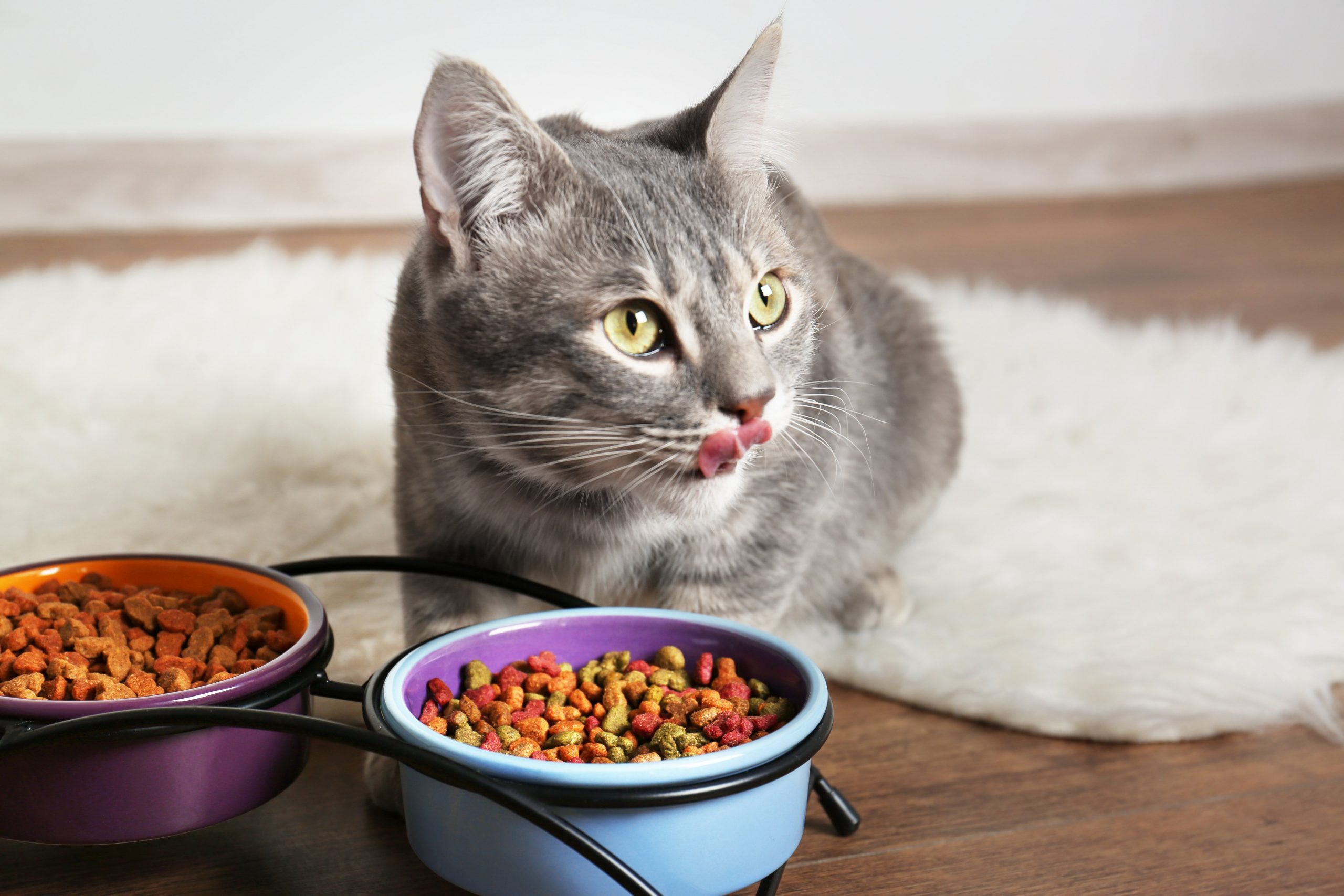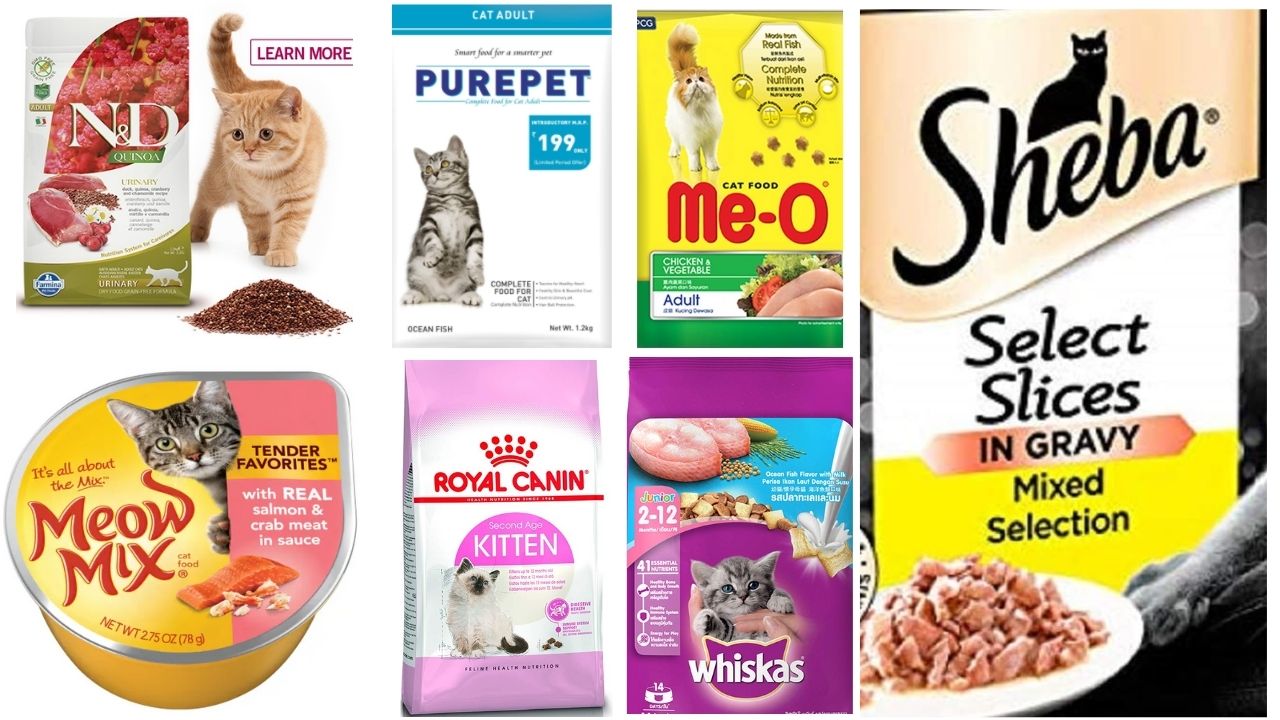Providing your feline companion with optimal nutrition is crucial for their overall well-being. With the myriad of cat food options available, selecting the best one can be a daunting task. This comprehensive guide will delve into the nutritional requirements of cats, explore the different types of cat food, and provide expert recommendations to help you make informed choices for your furry friend.
Our team of veterinary experts has meticulously researched and analyzed numerous cat food brands to present you with a curated list of the top-rated options. We’ll also discuss essential factors to consider when selecting cat food, such as your cat’s age, health conditions, and activity level.
Additionally, we’ll shed light on common ingredients to avoid and provide a step-by-step guide to transitioning your cat to a new food.
Nutritional Requirements of Cats
Cats, as obligate carnivores, have unique nutritional needs that must be met through a balanced diet. Their bodies are specifically adapted to digest and utilize animal-based proteins, fats, and certain vitamins and minerals. A diet that meets these specific requirements is essential for maintaining optimal health and well-being throughout their lives.
The nutritional requirements of cats vary depending on several factors, including age, activity level, and health status. Kittens, for instance, require a higher intake of protein and calories to support their rapid growth and development. Active cats may need more calories to fuel their energy needs, while senior cats may require a diet that is easier to digest and lower in calories to prevent weight gain.
Cats with certain health conditions may also have specific dietary needs that must be addressed by a veterinarian.
Essential Nutrients
The essential nutrients that cats require for optimal health include:
- Protein: Cats are obligate carnivores and require a high intake of protein to meet their amino acid needs. Animal-based proteins, such as those found in meat, poultry, and fish, are the best sources of essential amino acids for cats.
- Fats: Fats provide energy and essential fatty acids, which are necessary for skin and coat health, as well as brain development and function.
- Carbohydrates: Carbohydrates are not essential for cats, but they can provide energy and fiber. However, cats have a limited ability to digest carbohydrates, so they should only be included in their diet in small amounts.
- Vitamins: Vitamins are essential for a variety of bodily functions, including metabolism, immune system function, and vision. Cats require a variety of vitamins, including vitamins A, D, E, and K.
- Minerals: Minerals are also essential for a variety of bodily functions, including bone development, muscle function, and nerve function. Cats require a variety of minerals, including calcium, phosphorus, potassium, and sodium.
Types of Cat Food

The market offers a wide array of cat food options, each catering to specific nutritional needs and preferences. Understanding the distinctions between these types can help you make an informed choice for your feline companion.
Dry Food
- Advantages: Convenient, shelf-stable, promotes dental health by scraping tartar from teeth.
- Disadvantages: Can be less palatable than wet food, may contribute to dehydration if not enough water is consumed.
Wet Food
- Advantages: Highly palatable, provides hydration, easier to digest than dry food.
- Disadvantages: More expensive than dry food, requires refrigeration after opening, can contribute to dental problems if not supplemented with dry food.
Semi-Moist Food
- Advantages: Combination of dry and wet food characteristics, offers both convenience and hydration.
- Disadvantages: May contain higher levels of preservatives, not as palatable as wet food.
Ingredients and Quality
The quality of cat food is largely determined by its ingredients. Look for products with high-quality protein sources (e.g., chicken, fish), whole grains (e.g., brown rice), and healthy fats (e.g., omega-3 fatty acids).
Avoid foods with artificial flavors, colors, or preservatives.
Top-Rated Cat Food Brands

Choosing the right cat food is essential for the health and well-being of your feline friend. To help you make an informed decision, we’ve compiled a list of the top-rated cat food brands based on independent reviews and consumer feedback.
These brands offer a wide range of options to suit different ages, health conditions, and preferences. Whether you’re looking for a high-quality kibble, a grain-free wet food, or a specialized formula for kittens or senior cats, you’re sure to find something that meets your needs.
Brand Comparison Table
The following table compares the top-rated cat food brands based on their type of food, key features, and average price range:
| Brand Name | Type of Food | Key Features | Average Price Range |
|---|---|---|---|
| Purina Pro Plan | Kibble, wet food, treats | High-quality ingredients, tailored to specific needs, affordable | $10-$30 per bag |
| Hill’s Science Diet | Prescription and non-prescription kibble, wet food, treats | Veterinarian-recommended, tailored to specific health conditions | $15-$40 per bag |
| Royal Canin | Kibble, wet food, treats | Specialized formulas for different breeds, ages, and health conditions | $15-$40 per bag |
| Blue Buffalo Wilderness | Grain-free kibble, wet food, treats | High-protein, low-carb, made with real meat | $15-$35 per bag |
| Wellness Complete Health | Kibble, wet food, treats | Natural ingredients, no artificial flavors or preservatives | $12-$25 per bag |
It’s important to note that this list is not exhaustive and there are many other reputable cat food brands available. When choosing a brand, it’s important to consider your cat’s individual needs and preferences.
Factors to Consider When Choosing Cat Food
Choosing the best cat food for your feline friend involves considering several important factors that can impact their health and well-being. These factors include:
- Age: Kittens, adult cats, and senior cats have different nutritional needs based on their age and activity levels.
- Health conditions: Cats with specific health conditions, such as allergies or kidney disease, may require specialized diets to manage their symptoms.
- Activity level: Active cats need more calories and protein to support their energy expenditure.
- Budget: Cat food prices can vary significantly, so it’s important to consider your budget when selecting a food.
Age
* Kittens: Kittens require a high-calorie diet rich in protein and fat to support their rapid growth and development. Look for kitten-specific formulas that meet their nutritional needs.
Adult cats
Adult cats need a balanced diet that provides essential nutrients without excessive calories or fat. Choose a food that is formulated for adult cats and meets their activity level.
Senior cats
Senior cats may have reduced appetites and decreased activity levels, so their food should be easy to digest and provide adequate nutrition without excessive calories. Look for senior-specific formulas that address their specific needs.
Health Conditions
* Allergies: Cats with food allergies may need a specialized diet that excludes the allergens they react to.
Kidney disease
Cats with kidney disease may require a low-protein, low-phosphorus diet to reduce the strain on their kidneys.
Diabetes
Cats with diabetes may need a high-fiber, low-carbohydrate diet to help manage their blood sugar levels.
Activity Level
* Active cats: Active cats need a diet that provides more calories and protein to support their energy expenditure. Look for foods that are high in protein and fat.
Less active cats
Less active cats need a diet that is lower in calories and fat to prevent weight gain. Choose a food that is formulated for less active cats or a senior formula.
Budget
* Premium brands: Premium cat food brands typically use higher-quality ingredients and have stricter quality control measures. They can be more expensive than budget brands.
Budget brands
Budget cat food brands may use lower-quality ingredients and have less stringent quality control measures. They are typically less expensive than premium brands.It’s important to consult with your veterinarian before making any changes to your cat’s diet, especially if they have any health conditions.
Your veterinarian can help you choose the best cat food for your pet’s individual needs.
Common Cat Food Ingredients to Avoid
Cat owners should be aware of certain ingredients that are commonly found in cat food but are harmful or unnecessary for feline health. These ingredients can cause various health problems, ranging from digestive issues to more serious conditions.
Some of the most concerning ingredients to avoid include:
Meat by-products
- Meat by-products are a common ingredient in low-quality cat food. They are made from the parts of animals that are not fit for human consumption, such as organs, bones, and skin.
- Meat by-products are low in nutritional value and can contain harmful contaminants, such as bacteria and parasites.
- Cats who eat food that contains meat by-products may experience digestive problems, such as vomiting and diarrhea.
Corn and wheat
- Corn and wheat are often used as fillers in cat food. They are low in nutritional value and can be difficult for cats to digest.
- Cats who eat food that contains corn or wheat may experience digestive problems, such as gas and bloating.
- Some cats may also be allergic to corn or wheat.
Artificial flavors and colors
- Artificial flavors and colors are added to cat food to make it more appealing to cats. However, these ingredients are not necessary for feline health and can be harmful.
- Some artificial flavors and colors have been linked to cancer and other health problems.
- Cats who eat food that contains artificial flavors and colors may experience allergic reactions, such as skin irritation and itching.
Cat owners should read the labels of cat food carefully and avoid brands that contain these harmful ingredients. There are many high-quality cat food brands on the market that use only natural, wholesome ingredients.
Here are some examples of cat food brands that avoid harmful ingredients:
- Blue Buffalo Wilderness
- Canidae All Life Stages
- Merrick Purrfect Bistro
- Natural Balance LID
- Orijen Six Fish
Transitioning to a New Cat Food
It’s crucial to transition your cat to a new food gradually to avoid digestive upset. Here’s how:
Step-by-Step Transition Guide
- Start by mixing 25% of the new food with 75% of the old food. Continue this ratio for 2-3 days.
- Gradually increase the proportion of the new food by 25% every 2-3 days. By day 10-14, your cat should be eating 100% of the new food.
Signs of Food Sensitivities or Allergies
Monitor your cat for any signs of food sensitivities or allergies during the transition, such as:
- Vomiting
- Diarrhea
- Itching
- Skin irritation
If you notice any of these signs, stop feeding the new food and consult your veterinarian immediately.
Last Recap
Selecting the best cat food for your beloved companion is an investment in their health and happiness. By understanding their nutritional needs, considering the factors discussed in this guide, and avoiding harmful ingredients, you can provide your feline friend with a diet that supports their well-being.
Remember, a healthy and well-nourished cat is a happy cat!
FAQ Section
What are the most important nutrients for cats?
Cats are obligate carnivores, meaning they require animal-based protein for optimal health. Essential nutrients include taurine, arachidonic acid, vitamin A, and vitamin D.
What type of cat food is best for kittens?
Kittens have higher nutritional needs than adult cats and require a diet rich in protein and fat. Look for kitten-specific formulas that provide the necessary nutrients for their growth and development.
How often should I feed my cat?
The frequency of feeding depends on your cat’s age, activity level, and appetite. Generally, adult cats should be fed twice a day, while kittens may need to eat more frequently.
What are some common signs of food allergies in cats?
Food allergies in cats can manifest as skin irritation, digestive issues, and respiratory problems. If you suspect your cat has a food allergy, consult with your veterinarian for proper diagnosis and dietary recommendations.




